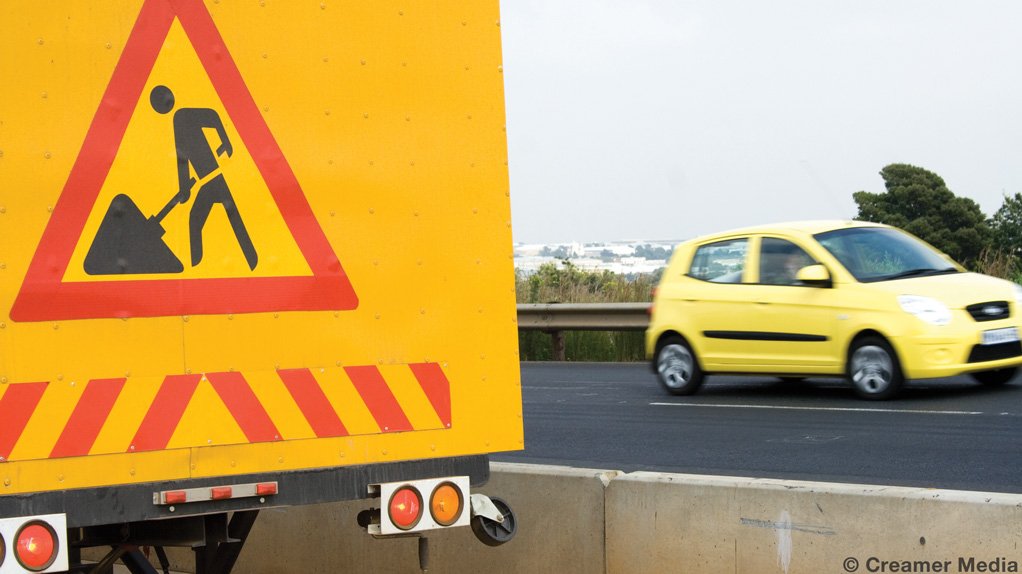Two new programmes set to start this month to revamp two of the busiest roads under special purpose vehicle Bakwena Platinum Corridor Concessionaire’s responsibility were expected to enhance traffic flow and road safety upon completion.
The group, as part of its 30-year concession with the South African National Roads Agency Limited (Sanral), would complete the roadworks at the Zambezi and Doornpoort Plazas in November 2015 and May 2016 respectively.
With as many as 170 000 vehicles passing daily through the 17 Bakwena-managed N1N4 toll plazas, much of it commuter traffic concentrated around Tshwane, Bakwena aimed to upgrade many of its routes this year to ease congestion and reduce the number of accidents.
Speaking during a media tour of the tolled routes, commercial manager Liam Clarke said Doornpoort processed around 35 000 vehicles a day, while the vehicles travelling through the Zambezi Plaza fluctuated between 20 000 and 40 000 a day.
Bakwena would convert the current Zambezi interchange into a diverging diamond interchange (DDI), which was expected to “enhance traffic capacity, alleviate congestion and provide a free flow of traffic”, while easing the bottlenecking experienced at the Sefako Makgatho Interchange on the N1.
The R29-million DDI, the concept of which was first introduced to South Africa by Sanral last year, allowed the two directions of traffic on the nonfreeway road to cross over to the opposite side of the road on both sides of the bridge through a two-phased signalised intersection.
Bakwena noted that the design, similar to interchanges implemented in France and the US, improved the capacity and safety of interchanges, reduced traffic and pedestrian “conflict points” and reduced overall accidents, with a complete elimination of right turn accidents.
The Doornpoort Plaza would also get a facelift, with the construction of four reversible lanes that were expected to contribute 28% more capacity for enhanced movement on the N4 routes.
“The experiences of those who frequently use this route are important to us and the construction of these reversible lanes at Doornpoort is our response to the requests received from road users to help ease traffic congestion,” Clarke commented, adding that measures had been put in place to limit congestion during the construction phase.
Meanwhile, Bakwena remained focused on maintaining and developing its road network.
“Without the [required] maintenance, the road transport system will begin to deteriorate rapidly and that would result in increased vehicle maintenance and fuel costs, not to mention increased congestion, higher levels of frustration and damage to the environment and ecosystems around the roads,” said Clarke.
Further, inefficient or deteriorated networks increased the severity and frequency of accidents, with recently completed road construction projects, in addition to several road safety initiatives, showing a direct impact on road safety.
Clarke on Wednesday confirmed that, for the first time, there were no fatalities on Bakwena’s road network during the first two months of 2015, with 16 accidents reported in January and 15 in February.
This had followed a significant decrease in the fatality rate on the road network – usually six to seven a month – from eight in December 2013 to three in December 2014.
“We are working tirelessly to ensure that that rate is reduced to zero," said Clarke.
Bakwena also operated two traffic control centres – the Mantsole Traffic Control Centre and the Bapong Traffic Control Centre – on behalf of Sanral to ensure that vehicles using the roads were not overloaded and were roadworthy.
At Bapong alone, the company saw a reduction in overloading from 14% of heavy vehicles travelling the route in 2009 to 2.5%.
EMAIL THIS ARTICLE SAVE THIS ARTICLE
To subscribe email subscriptions@creamermedia.co.za or click here
To advertise email advertising@creamermedia.co.za or click here











